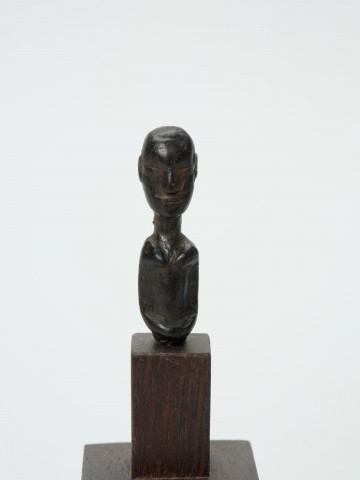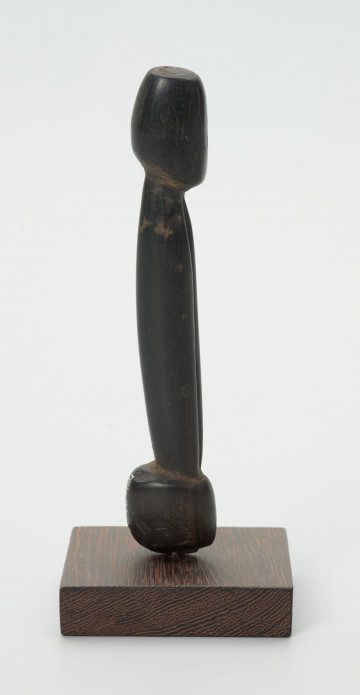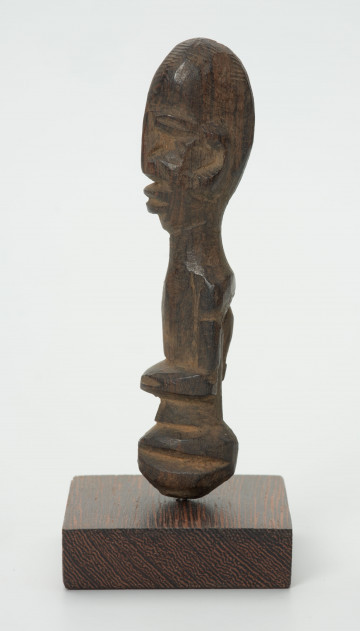
Fetish
między 1951 — 2000
National Museum in Szczecin
Part of the collection: Collection of Dogonian art
The Dogon are people living in the Republic of Mali in the Bandiagara, Duentza and Bankass regions. Their number is estimated at around 500-600 thousand. The basis of their economy is hoe-farming. Many of the Dogon annual rituals are related to ensuring a good harvest. To this end, they thank the god Amma and their ancestors for a good harvest, while also asking for blessings for the coming field season. The two most important festivals associated with the agricultural calendar are Goru and Bulo, during which the priests of the two cults of life, Hogon (priest of the Lebe cult) and Binukedine (priest of the Binu cult), work together.Bulo is a festival of sowing, an important part of which are the sacrifices made on the altars of wagem located in the houses of the family patriarchs and on the altars of the cult of Lebe, i.e. the ancestor who died first, but turned into a snake after death and became a symbol of the vegetative forces of nature. During the Bulo festival sacrifices are also made at the shrines of the cult of Binu, the ancestor who travelled with Nommo in a special ark to Earth and helped the deity to overcome chaos, symbolised by the rebellious Yurugu. A procession passes by the Binu shrines, accompanied by drummers. From the terrace of the shrine, one of the Binukedine scatters ears of millet towards the east and the gathered Dogon try to catch them. The millet is thrown in the direction from which, it is believed, comes the rain that brings blessings. This is also the announcement of a good harvest. Then a procession consisting of priests of the Binu cult, men, women, children and musicians playing drums and metal bells enters the main square where the Lebe altar is. Hogon, who cannot move freely as he could burn the ground and thus nullify future harvests, sits near it.
Ewa Prądzyńska
Author / creator
Dimensions
cały obiekt: height: 5,5 cm, width: 1 cm
Object type
figure
Creation time / dating
Creation / finding place
Identification number
Location / status

między 1951 — 2000
National Museum in Szczecin

między 1951 — 2000
National Museum in Szczecin

między 1951 — 2000
National Museum in Szczecin
DISCOVER this TOPIC
Museum of King Jan III's Palace at Wilanów
DISCOVER this PATH
Educational path